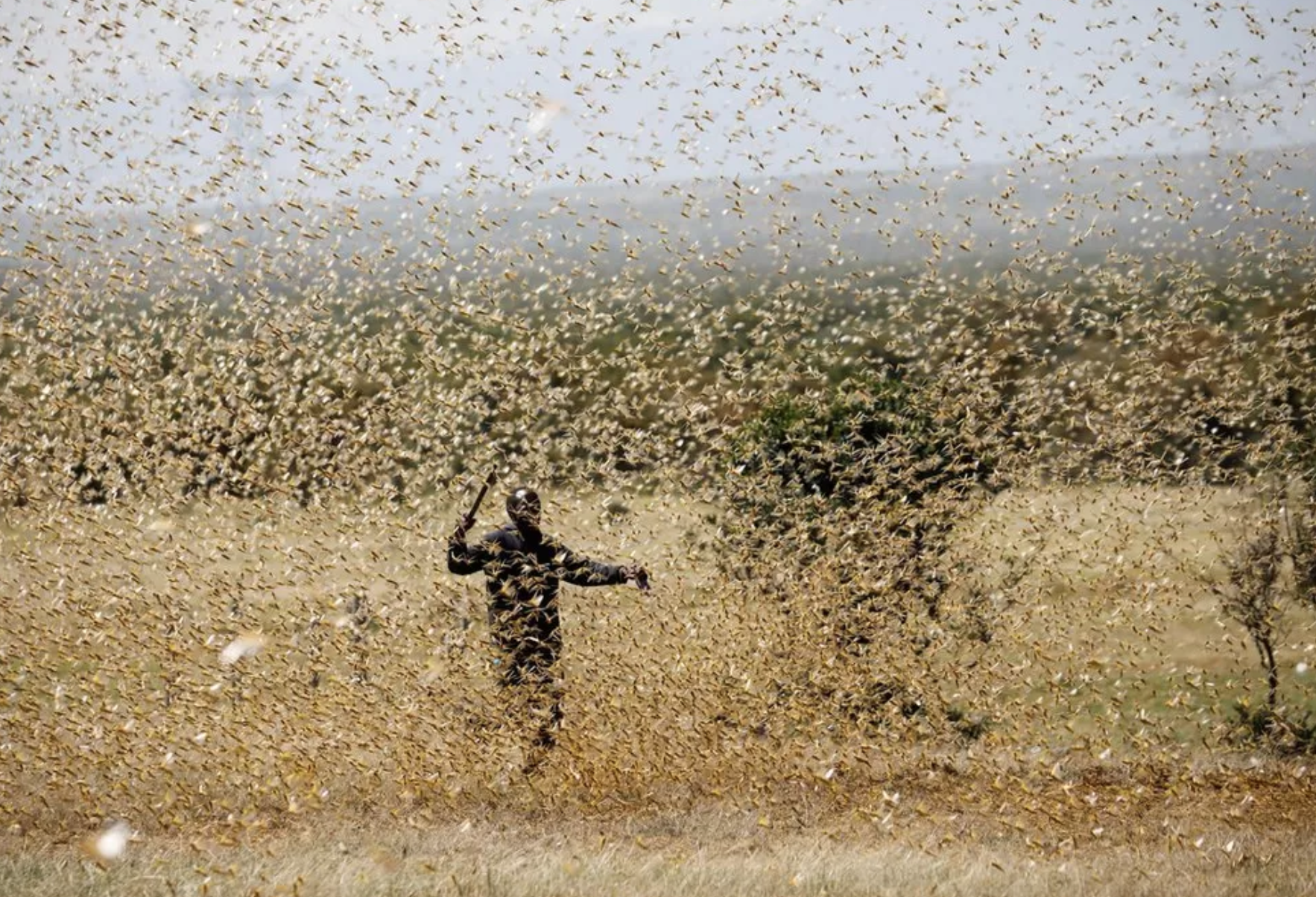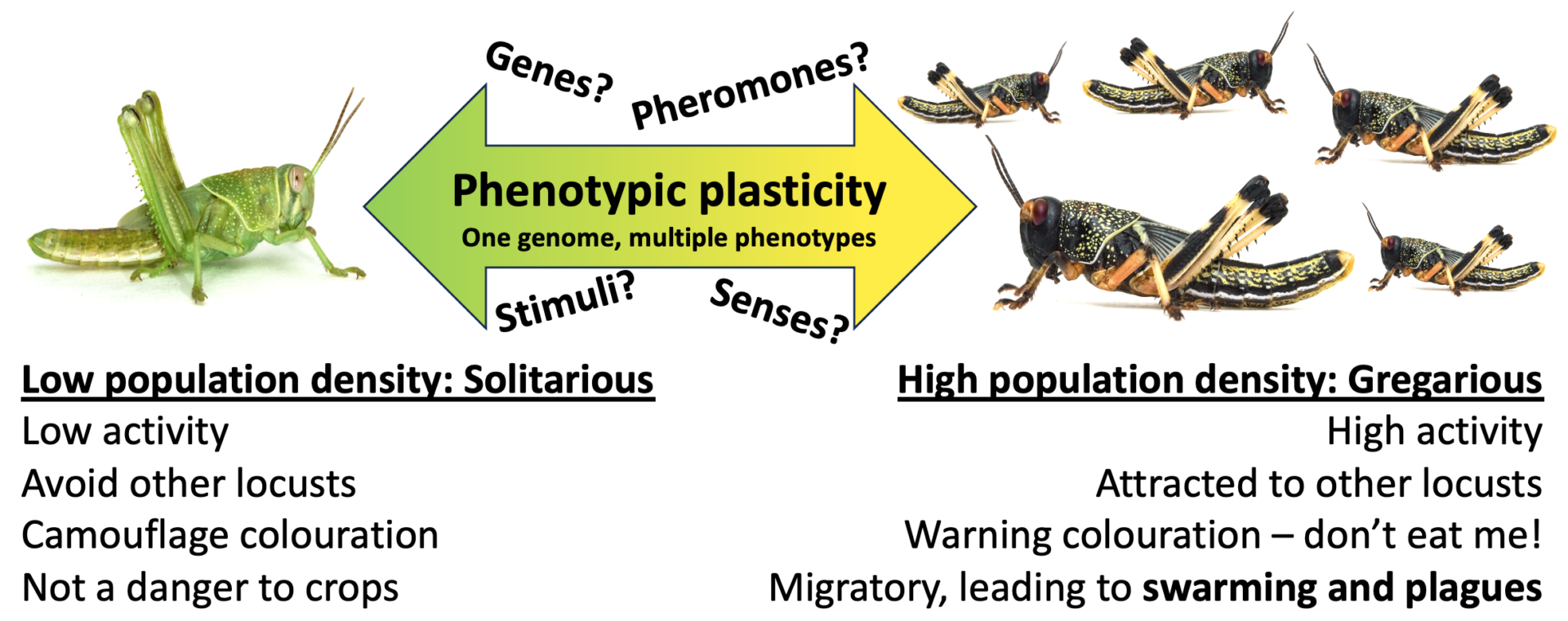Nurture versus nature in locusts – can we control their swarming behaviour?
Are you interested in animal behaviour, and its physiological control? Would you like to perform research that could inform new agricultural practices? Then this is the PhD for you!
Locusts are the best-known pests of worldwide agriculture, with up to 10% of the world’s human population at risk of devastating plagues. Key to their destructive behaviour is their extreme phenotypic plasticity, in which their genome will give rise to a benign ‘solitarious phase’ at low population densities or a swarming ‘gregarious phase’ at high densities. Locusts can rapidly change phase, meaning that local environmental conditions, including the availability of food and egg-laying areas, ultimately dictate whether solitary individuals are forced to band together and swarm (gregarization), or gregarious locusts are conversely forced to ‘go it alone’ (solitarization).

The mechanisms by which locusts detect one another, and how this leads to their gregarization and swarming, has been extensively studied, but the reverse process of solitarization has received far less attention. This is because locust management has historically focused on the prevention of swarm initiation, rather than trying to break up swarms once they’ve started. However, climate change is altering the spatial and temporal distribution of swarms, making them harder to predict, meaning that reactive swarm dispersal methods look set to become increasingly necessary.
This project will determine some of the sensory and physiological mechanisms controlling locust behavioural plasticity, while providing the student with a diverse range of skills and a clear path to publication. The project focus will be the infamous desert locust, but will also include economically important yet understudied species such as the red, brown and Moroccan locusts, supplied by our worldwide collaborators. The student will isolate gregarious locusts to drive solitarization, before assessing social, sexual and aggressive behaviours using AI-powered video tracking.

Specific objectives will be:
1. Determining the time course and sensory control of solitarization in the desert locust, and both gregarization and solitarization for novel species as obtained through my worldwide collaborator network. Sexual and aggressive behaviours will also be quantified throughout these behavioural transitions, using automated video-tracking software and multivariate statistical analysis.
2. Determining the underlying control mechanisms (gene expression, neurotransmitters, neuropeptides, hormones, pheromones) for each process. These will be measured using a range of laboratory techniques including high-throughput sequencing, mass spectroscopy and chromatography, and followed up using pharmacology and RNAi-based experiments.
3. Determining the distribution of food and egg-laying sites (patch size and pattern) that will cause gregarious locusts to disperse in their environment, leading to solitarization. This will be measured using medium-scale behavioural assays and statistical analysis.
4. Presenting findings through high-quality publications, and at international conferences. The project will ultimately further the study of collective behaviour and phenotypic plasticity; inform global stakeholders about potential swarm-disruptive methodologies; and give the student a strong PhD and a footing into a career in science, agriculture or sustainability research.
This opportunity would suit a graduate in Biology or Zoology, with interests in animal behaviour, entomology, physiology and molecular biology. This is primarily a laboratory-based project, and will involve the rearing and maintenance of insect colonies and various feed plants. Some lab experience would be useful, but is not essential – the only important thing is that you’re not afraid of insects!
Please contact Darron Cullen if you have any questions!
